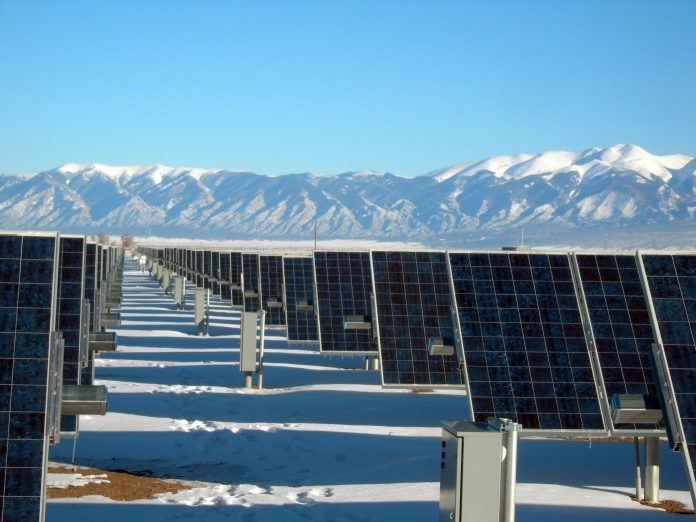
A team of researcher and colleagues from the University of California – UCLA conducted by senior author Richard Kaner, have designed a brand new device that creates electricity from snowing. They called it Snow-TENG, a snow based triboelectric nanogenerator, which would be theoretically inexpensive, small and you can say it, thin and flexible like a sheet of plastic.
The research was funded by Nanotech Energy, a company spun off from Kaner’s research, he being the chair of its scientific advisory board.
According to Wikipedia: “Mr. Richard B. Kaner is a synthetic inorganic chemist, whose work spans across many areas of expertise. He is well known for his research in the fields of conductive polymers (polyaniline), super-hard materials and carbon compounds, such as fullerenes and graphene. He holds a joint appointment in the Department of Chemistry and Biochemistry as well as the Department of Material Science and Engineering at UCLA. He is involved with outreach programs geared to teaching new scientific concepts to high school teachers as well as making online videos. He has served on the board of directors for California NanoSystems Institute.”
At the beginning I thought it would has a solution to improve electricity production besides solar panels during the winter time, when they are covered with snow. Then I realized that Snow-TENG now being more likely a sensor which can detect the fall of the snowflakes than producing important currents. In order to have an idea for those who understand the values, the device can generate an instantaneous output power density as high as 0.2 mW/m2, an open circuit voltage up to 8 V, and a current density of 40 μA/m2.
The snow is positively charged and gives up electrons. Silicone — a synthetic rubber-like material that is composed of silicon atoms and oxygen atoms, combined with carbon, hydrogen and other elements — is negatively charged. When falling snow contacts the surface of silicone, that produces a charge that the device captures, creating electricity.
“Static electricity occurs from the interaction of one material that captures electrons and another that gives up electrons,” said Mr. Kaner, and when “You separate the charges and create electricity out of essentially nothing.”
The performance of this device is in correlation with the efficiency of the materials to extract the electrons and after many tests, the researchers found out that silicone produces more charge than many other materials.
Statistically about 30 percent of the whole Earth’s surface is covered by snow each winter, and during this time the solar panels often are not operating. The big accumulation of snow reduces significant the amount of sunlight that reaches the solar panels, limiting this way their output power and rendering them less effective. The new device could be directly integrated into solar panels to provide a continuous power supply when it snows, Kaner said.
To design the device the research team used 3-D printing, to capture the charge having a layer of silicone and an electrode. An important advantage is that the device could be produced at low cost given “the ease of fabrication and the availability of silicone,” Kaner said. Nowadays the silicone is widely used in industry, for lubricants, electrical wire insulation and biomedical implants, and due to this discovery it is highlighted the potential for green electricity production.
According to researchers, this device can be used for monitoring winter sports, such as skiing, to more precisely assess and improve an athlete’s performance when running, walking or jumping. It also has the potential for identifying the main movement patterns used in cross-country skiing, which cannot be detected with a smart watch.
Kaner said that: “The device can work in remote areas because it provides its own power and does not need batteries,”, and: “It’s a very clever device — a weather station that can tell you how much snow is falling, the direction the snow is falling, and the direction and speed of the wind.”
All details about the Snow-TENG are published in the Nano Energy journal.



